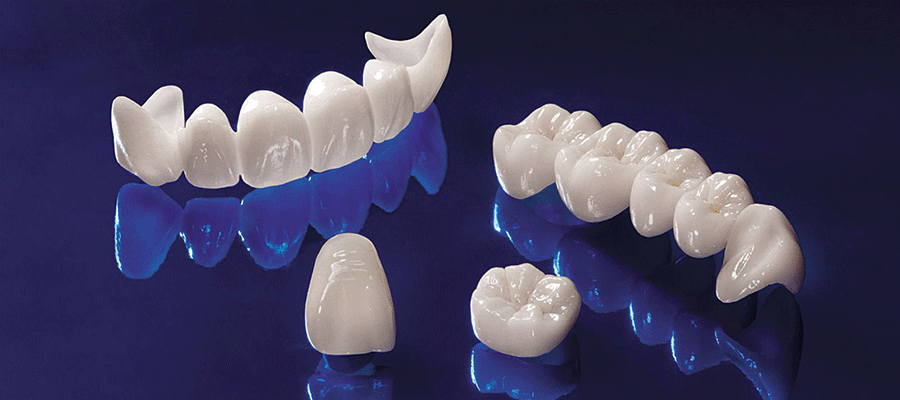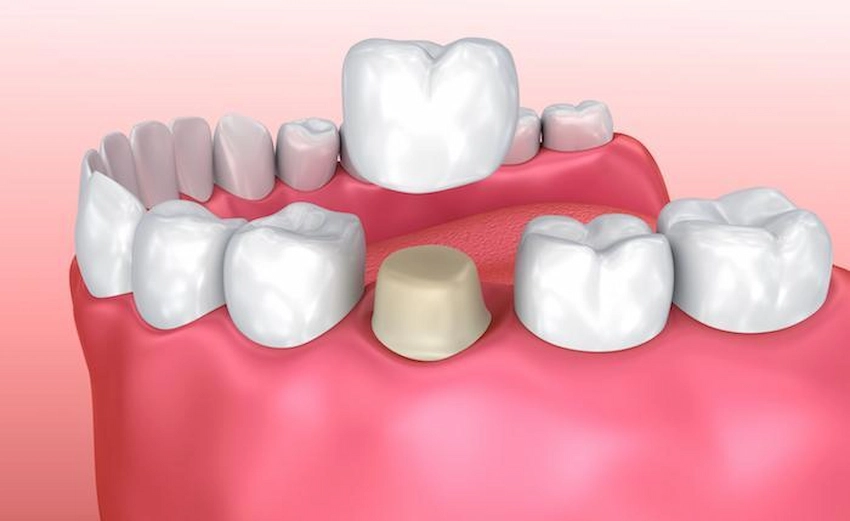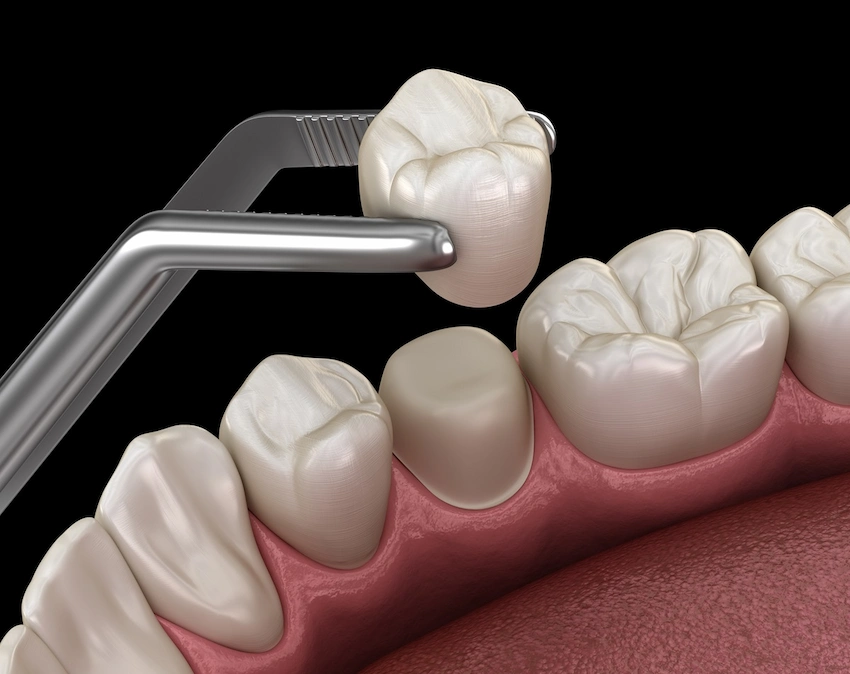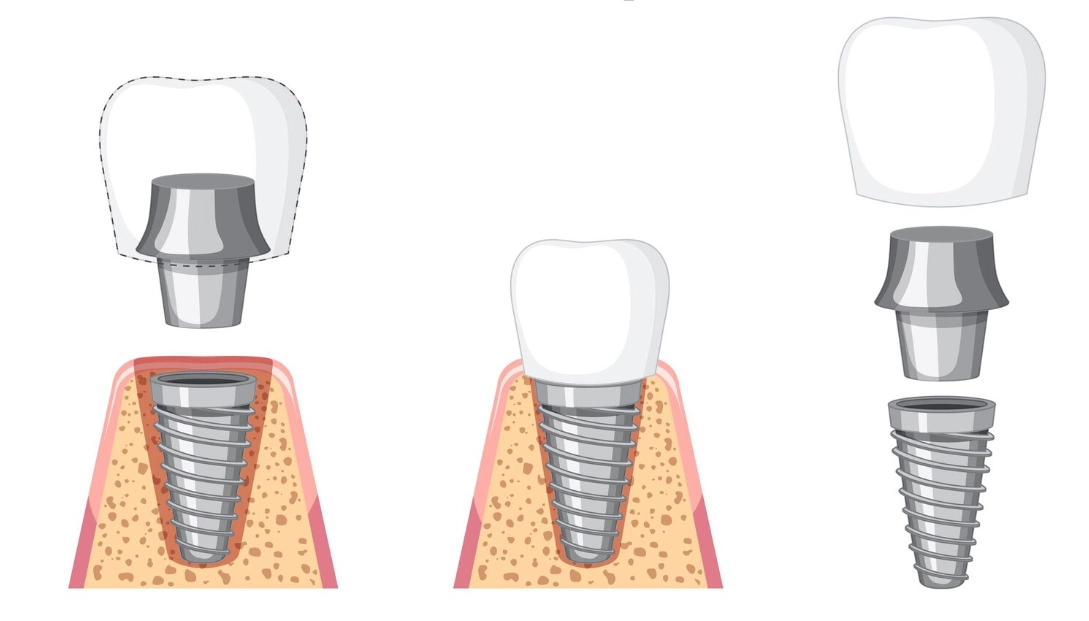🦷Dental Crown Procedure: What To Expect

In the majority of dental crown operations, the first phase consists of the machining of the tooth, followed by making the impressions, fixing the interim crown, and fitting the final crown in another visit. Do you want to know about dental crowns? This is an incredible process that can regenerate your confidence and give you a smile for a long period alongside good oral health. However, how does the procedure work? You will know what to expect when you go for the first dental crown process by knowing the steps that will be involved from the first visit to the last fitting for the work.
Preparing for Your Dental Crown: What to Expect During the Preparation Process
Dental crown preparation is essential for realizing a successful coronation. They basically include a consultation with your dentist to analyze the need of the crown and the various options available. The dentist will examine the teeth thoroughly and take X-rays of the nearby structures at the same appointments. The information gathered during this process helps to ascertain the level of decay and advise accordingly, on the level of treatment required.
Once the plan for treatment is agreed upon, the dentist will provide you with instructions on how to get yourself prepared for the dental procedure. This step entails possible restrictions on food and drinks as well as calming your anxiety and taking sedatives. Once you have done the first appointment for the crown, then it might be good to think of having a friend or a family member accompany you for this process.
This will ensure that you are not disoriented and hindered from proceeding with the regular activities. Follow the instructions carefully throughout the preparation process. You can contribute positively to the success of the dental crown process.
Different Types of Dental Crowns: How to Choose the Best Dental Crown for You

There are different varieties of dental crowns hence identifying the kind of dental crown for you may depend on the pros of each crown. Knowing the various types of crowns currently on the market enables you to make the right kind of purchase that will meet your needs and interests accordingly. The following are the most common types:
- Metal Crowns: These are highly durable crowns that are made of metal and can effectively resist chewing forces. Since they are strong crowns, they are mainly used for posterior teeth that are less visible rather than the front or visible teeth with respect to their aesthetic appeal. They have a relatively longer lifespan and provide value for money.
- Porcelain-Fused-to-Metal Crowns: This type of crown is a combination of both metals as the base and porcelain on top. This means that they have the strength of metals as well as the natural look of porcelain. Are excellent for both front teeth and back teeth that require to be replaced or restored for aesthetics and strength respectively?
- All-Porcelain Crowns: These are highly aesthetic crowns made entirely of porcelain, thus ideal for matching natural teeth in every way. They are considered ideal crowns for anterior or front teeth. They provide a beautiful natural finish with the only downside being that these crowns are not as strong as their metal counterparts.
- Zirconia Crowns: These advanced types of crowns have made an impressive impact on the field of dentistry. The notable thing with the zirconia crown is that it possesses outstanding physical properties and aesthetic appeal. They have great strength which means they won’t chip or crack easily thus making them suitable for any tooth in the mouth
After evaluating these dental crown alternatives, you may collaborate with your dentist to choose the perfect crown according to the current requirements and your personal preference. Talking about the features and things to consider in each type to know what one will fulfill all your needs beyond just repairing your teeth. In this way, you will end up choosing a dental crown that is effective, functional as well as able to help improve your overall appearance and give you good and lasting dental health.
Anesthesia and Comfort: Ensuring a Pain-Free Experience
When going to the dentist for a dental crown procedure, patients typically dread the possibility of discomfort or pain. Modern dental practices have put in place various measures aimed to alleviate the common fear of dental patients. Before the procedure begins, your dentist assesses your needs and discusses the best anesthesia options for you.
In most cases, the dentist may inject local anesthesia into the area of the treatment ensuring a lack of pain, discomfort, and soreness during the entire procedure of dental crown placement. Anxiety, discomfort, and worry are common fears most people have and patients are put at ease so they can undergo the procedure confidently. The table below reveals the commonly employed kinds of anesthesia specific to dental crowns, and what their specific benefits are:
- Local Anesthesia: This type of anesthetic is designed to numb just the specific area of the mouth that’s being treated and consequently one completely conscious and cooperative. 1-2 hours
- Sedation Dentistry: To calm the patient’s nervousness, and anxiety during the treatment, sedation dentistry complements local anesthesia with techniques such as nitrous oxide, and oral medications that will create a mild state of sedation for the patient. Varies based on method.
- General Anesthesia: A specific type of anesthesia administration that is mostly used for more complicated surgical procedures and lengthy fixes to ensure the patient is completely unconscious throughout the surgery. This means that you will have no recollection of the surgery and it will feel like a split second moment while the surgery will actually take hours.
Duration of procedure
Before the commencement of the procedure, the dentist will take time to briefly explain all the available anesthesia options to the patient and then help the patient select the most appropriate one depending on their personal preferences and level of anxiety. This is a great assurance for the patients as it builds trust and confidence in the patients.
This way, the dentist expects and eliminates any form of uncertainties and discomfort the patient might have hence; patients’ experience for crown procedures is considerably enhanced hence making them more relaxed and the procedure seamless.
Crown Placement: Step-by-Step Guide to the Procedure

When a patient goes through the process of getting a dental crown, he or she should not expect to feel discomfort; instead, they should realize that the entire process was unhurried, precise, and able to create an ideal custom fitted and constructed restoration especially for them. If you have ever been anxious about the dentist’s chair, an awareness of the important steps within the particular procedure would help you feel better and thus conquer your anxiety and fear. Below is a summary of the various procedures that entail putting in place a dental crown, so that you can find out
Consultation with Your Dentist
During this first meeting, the dentist primarily inspects the concerned tooth and talks about the different types of crown that can be suitable for you, giving you a chance to select the best option that would meet your specific needs, type of dental crown that would fit your fully or partly missing and or broken teeth, teeth that have undergone root canal treatment among other issues.
Tooth Shaping for Crown Procedure
Your dentist then works on the tooth by sculpting it down to a standard of an accepted size that fits the crown well especially at the edges as well as allowing for a better bond between the cement and the tooth. With this skillful shaping done your dentist ensures the new crown can properly fit the tooth and remain in place anytime you are using it.
Custom Crown Impression Technique
Your dentist will also take precise impressions of the field crown’s tooth structure and the neighboring teeth to provide a road map for the crown. This makes dentures that arise above the gum line and sit perfectly with the adjoining teeth, so you do not even feel any difference between a natural tooth and the dental crown.
Temporary Crown Protection
Then as the lab works on your crown, your dentist places a temporary crown that mimics your actual teeth to ensure that you can still use the teeth in the meantime. Temporary crowns protect the existing foundation and are intended to last until permanent dental crowns are placed without any problem.
Crown Adjustment for Enhanced Comfort and Aesthetics
Afterwards, once your permanent dental crown has been designed by the lab technician and is ready for placement, your dentist will go on remove the temporary one and put carefully – ensuring a perfect fit overall in order for you to have maximum comfort as well as oral
Frequently Asked Questions About Dental Crowns
A dental crown is a custom-made cap placed over a damaged tooth to restore its shape, size, strength, and appearance. Crowns provide protection and can improve the tooth’s aesthetics, especially when it’s severely decayed or fractured.
There are several types of dental crowns, including porcelain, metal, porcelain-fused-to-metal, and zirconia crowns. The type chosen depends on factors like the location of the tooth, the need for durability, and aesthetic preferences.
The dental crown procedure typically involves two visits. The first visit prepares the tooth by removing decay and shaping it to fit the crown, followed by taking impressions. During the second visit, the temporary crown is replaced with the permanent one, ensuring a perfect fit.
Dental crowns are usually made from porcelain, metal, porcelain-fused-to-metal, or zirconia. Each material has its own advantages, with porcelain offering aesthetic appeal and metal crowns being highly durable, especially for back teeth.
With proper care, dental crowns can last between 5 to 15 years or more. Porcelain crowns typically last longer than composite ones, and their lifespan can be extended with regular dental check-ups and good oral hygiene.
Preparing for a dental crown procedure involves scheduling a consultation, during which your dentist will examine your teeth and take X-rays. You may also need to avoid certain foods and be ready for temporary crown placement while the permanent one is being created.
Preparing for a dental crown procedure involves scheduling a consultation, during which your dentist will examine your teeth and take X-rays. You may also need to avoid certain foods and be ready for temporary crown placement while the permanent one is being created.
The most common anesthesia for dental crown placement is local anesthesia, which numbs the area around the tooth. Sedation dentistry options, such as nitrous oxide or oral medication, are available for patients who feel anxious or need additional relaxation.
The dental crown procedure itself is generally not painful, as it is performed under local anesthesia. Afterward, some discomfort or sensitivity may occur, but this is typically short-lived and can be managed with over-the-counter pain relievers.
To care for your dental crown, brush and floss regularly, avoiding sticky or hard foods immediately after placement. It’s also important to attend follow-up dental visits to ensure the crown remains properly fitted and functional.




